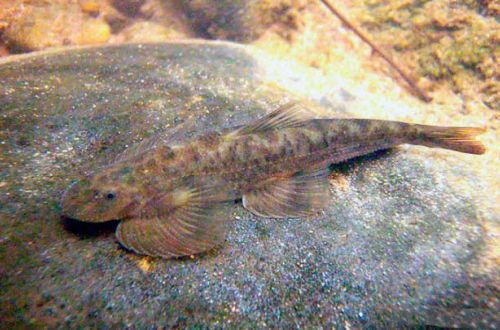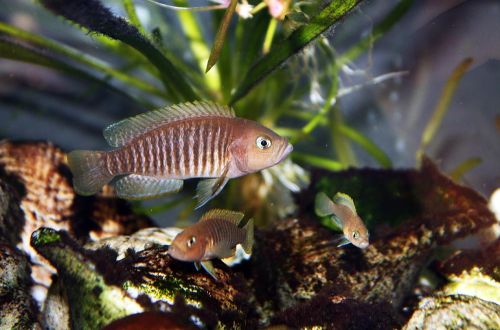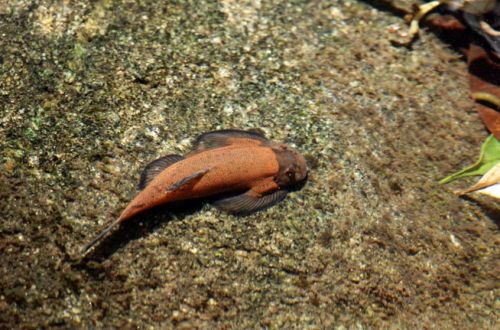
Nan Reki Gastromizon
Gastromizon of the Nan River, scientific name Hemimyzon nanensis, belongs to the family Balitoridae (Balitoridae). The fish comes from Southeast Asia (Indochina – Thailand). It was first discovered in the Nan River, one of the tributaries of the larger Chao Phraya River. Probably lives throughout the basin of the latter. Inhabits the upper reaches of rivers with fast turbulent currents. A typical biotope is a mountain shallow stream with many cascades, forming sandbars and stone heaps. Aquatic vegetation is usually absent.

Description
Adults reach a length of 5-6 cm. In the course of evolution, the fish has acquired a unique flattened body shape, which helps it withstand strong currents and stay on the surface of slippery stones. The coloration is inconspicuous brownish with areas of lighter shades – disguise on a sandy-stony bottom.
Behavior and Compatibility
Gastromizon of the Nan River is a territorial fish. However, he prefers to be in the company of relatives, provided that everyone finds a site for himself at the bottom of the aquarium.
It is peaceful, but due to the nature of the content (strong current), the number of compatible species is limited. Among the harmless fish that can live in similar conditions, we can distinguish Barilius Dogaringa, Rainbow Garra, large Danios, some Rasboras, Taiwan Goby, Catfish Akisis, as well as related Gastromizon Loaches.
Brief information:
- The volume of the aquarium – from 80 liters.
- Temperature – 16-22°C
- Value pH — 6.0–8.0
- Water hardness – soft to medium hard (2-15 dGH)
- Substrate type – sandy
- Lighting – moderate
- Brackish water – no
- Water movement – moderate or strong
- The size of the fish is 5–6 cm.
- Nutrition – foods with a high content of plant components
- Temperament – peaceful
Maintenance and care, arrangement of the aquarium
The optimal size of the aquarium for 4 fish starts from 80 liters. Bottom area is more important than tank height. The decoration is simple and consists of coarse sand, pebbles, massive boulders and stones. It is permissible to place several natural snags on the substrate.
Many aquarium plants do not tolerate strong currents well and are unable to root in soft sand. If desired, you can use aquatic mosses and ferns, fixed on the surface of stones and snags, without the need for planting in the ground.
An important condition for the successful maintenance of Nan River Gastromisons is the provision of clean water with a minimum content of organic waste, as well as the presence of a moderate or strong current. Both tasks are designed to cope with a productive filter, for example, a system of one or two internal filters. They will not only become a guarantee of clean water, but also ensure proper internal flow.
Do not neglect the regular maintenance of the aquarium. In particular, weekly replace part of the water with fresh water, remove accumulated waste and carry out preventive maintenance of equipment.
Food
In nature, they feed on a layer of algal film that forms on stones, and the organisms inhabiting it. In the home aquarium, food with a high content of herbal ingredients, such as spirulina and similar ingredients, should be fed. A good choice would be special briquettes, pastes, tablets that can be fixed at the bottom without fear that they will be carried away by the current.





